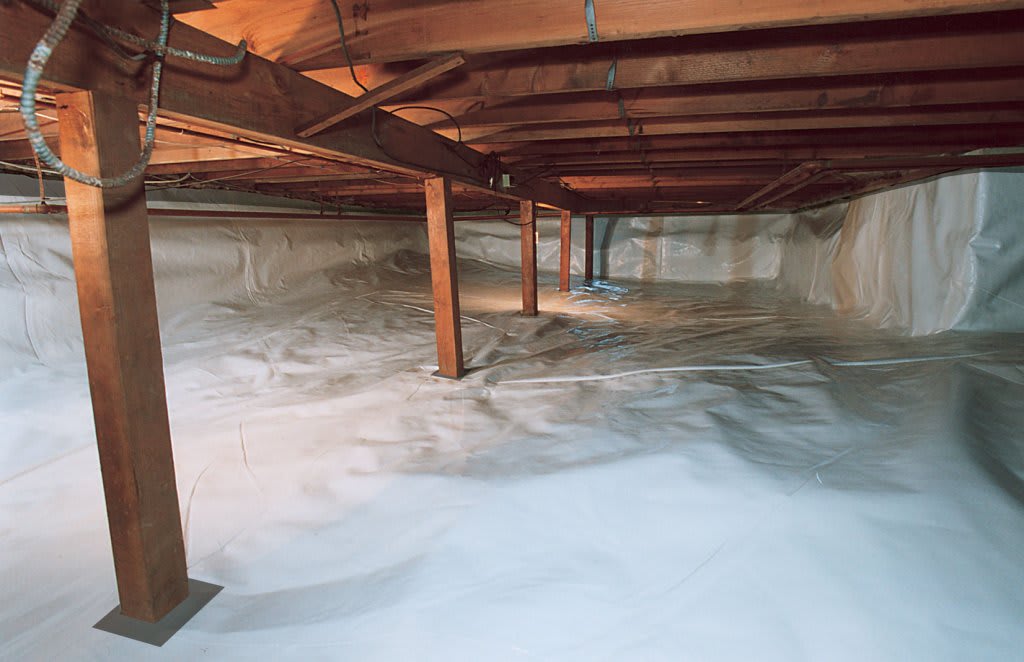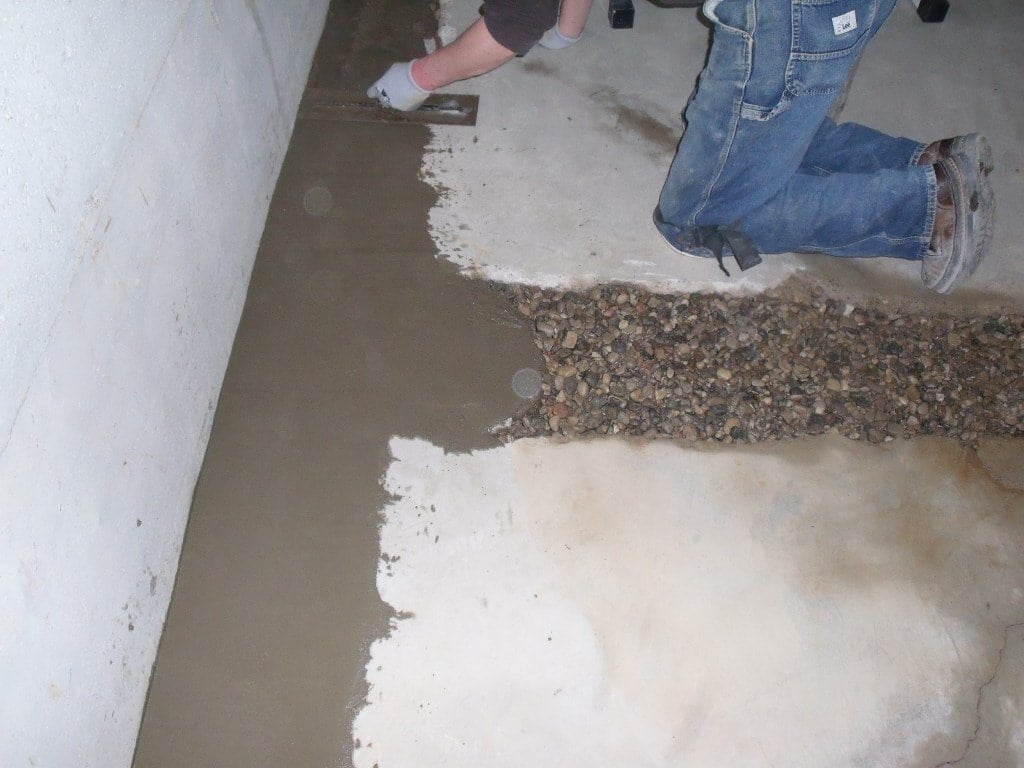-
Understanding the Top 3 Basement Waterproofing Methods
Understanding the Top 3 Basement Waterproofing Methods
There are few things worse for a homeowner than a wet basement. What appears to be just a tiny trickle or small puddle are the warning signs of a much bigger problem. Moisture in your basement can lead to an array of costly and time-consuming repairs. From structural damage to toxic mold, water in your basement is a serious problem. So what can we do to keep our basements dry and prevent moisture from making its way in?
Check out our top 3 basement waterproofing methods below to learn more.

What Causes Basement Moisture?
To best understand how to keep your basements dry, we need to have a thorough understanding of what causes moisture to occur in basements in the first place. Unfortunately for homeowners, water has a knack for finding its way into our homes. Due to the unique nature and construction of basements, these spaces are particularly prone to wetness. The points below highlight some of the primary causes of basement moisture:
-
Improper Soil and Drainage Systems:
If rain and groundwater cannot drain away properly it can make its way into your basement. Improper soil and poor drainage systems are one of the most common causes of basement wetness. If water isn’t directed away from the home, it will accumulate around the foundation, where it will try to find a way inside.
-
Poorly Installed and Maintained Gutters:
Gutters are intended to direct rainwater away from your foundation. If they are improperly installed or too clogged to function, water will drain around your foundation, rather than away from it.
-
Improper Slope:
The ground around your foundation should slope away from your home, not towards it. If the slope is wrong, water will accumulate around your foundation, rather than running away from it.
-
Hydrostatic Pressure:
Hydrostatic pressure occurs when water accumulates around your foundation. As gravity pushes down on that water, it will try to escape, in an effort to relieve that pressure. The water will force its way through any cracks in your basement walls and floors. In fact the pressure can get so strong, that it will cause cracks.
-
Cracks in Your Basement:
Cracks in your basement walls, floors, and around windows or doors provide the perfect avenue through which water can flow. Water will always follow the path of least resistance and these cracks make it easy for water to come inside.
-
Condensation:
Basements are notoriously damp places. When condensation occurs, it can bring mildew, mold, and potential damage along with it.
The list above is just a basic overview of the causes of basement moisture. To learn more about the causes behind basement moisture, click here to read our blog post about the subject.
The Top 3 Basement Waterproofing Methods
Now that we have a better understanding of what causes basement moisture, let’s talk about what we can do to prevent it. There are 3 methods to basement waterproofing:
#1. Interior
These are steps that can be taken to keep water out of your basement from the inside. These methods are often used after an existing problem has been identified. This can include sealants and coatings, as well as methods to prevent condensation.
#2. Exterior
As you would expect, these are methods that take place on the outside of your home. The goal with these methods to block water from ever making its way inside in the first place. This can include exterior drainage systems and coating the exterior walls with a waterproof barrier.
#3. Drainage
Drainage issues are one of the most common causes of basement moisture. This method can include repairing a poorly functioning drainage system, or adding a drainage system if there isn’t one in place.
Each situation is different, so it is important to have a good understanding of what waterproofing issues are present in your home. A truly effective waterproofing system will utilize all 3 methods.
Now let’s take a closer look at each of the 3 waterproofing methods and learn more.
Interior Waterproofing
Interior waterproofing methods are typically the easiest and most affordable. These typically begin with ensuring that any cracks or holes in your basement walls, floors, and around windows and doors, are properly sealed and watertight. Water most frequently makes its way into our basement via these cracks, so properly sealing them is the first step towards ensuring your basement stays dry. Special sealants can be used to effectively fill any cracks, preventing any new moisture from traveling inside. These sealants are typically quite effective and often come with extended warranties, guaranteeing their effectiveness.
Interior waterproofing methods, such as waterproof sealants, also do a good job at keeping humidity levels down, preventing condensation. These coatings can be put onto basement walls and floors creating a waterproof barrier. While these interior sealants are an important step in the overall waterproofing process, they do not address the underlying problems causing the moisture. The bigger problems are usually found on the outside.
Exterior Waterproofing
When it comes to wet basements, the root of the problem is typically located outside of the home. So when it’s time to waterproof your basement, it is important to look outside of your basement walls. Exterior waterproofing is typically a much larger undertaking than the simple sealing process we use on the inside. It is a good idea to consult a professional when considering exterior waterproofing methods.
Exterior waterproofing typically requires the excavation of the soil surrounding the foundation of the home. As you can imagine, this can be a labor-intensive process, requiring heavy tools and machinery. Once all the soil around the foundation has been removed, a waterproof sealant can be applied to the exterior walls. This sealant is typically a polymer base, which should last for the life of the building. Ideally, this exterior waterproofing process should occur during construction.
It is also important to mention gutter systems when discussing exterior methods. When properly installed, gutters direct rainwater away from the foundation of your home. However if not properly installed or maintained, these systems can have the opposite effect. Clogged gutters or gutters that drain to close to your foundation will deposit water along the base of your home, exactly where you do not want it be. Make sure to keep your gutters clean and free of debris to keep them working properly. Ensure you have proper downspouts that direct water as far away from your home as possible.
Drainage Systems
Drainage problems are often the underlying cause of moisture in your basement. Having proper drainage around your home is essential if you want to keep your basement dry. The goal of these drainage systems is to direct water (whether it be groundwater or rainwater) away from the foundation of your home. There are numerous different drainage systems available to help control the water around your home. To start, you should examine the soil around your house. Different types of soil drain in different ways. Be sure your home is surrounded by soil that drains easily and does not retain moisture.
Each home is different, so be sure to thoroughly examine how the drainage around your home is functioning. Take a look at the slope of the ground around your foundation. It should slope away from your foundation, not towards it. Depending on your specific situation, it may be necessary to install a sump pump to collect water from the inside and pump it away. These interior drainage systems collect water from around your foundation and pump it out away from your basement.
These systems should be designed to function in case of a power outage. As one might imagine, installing a sump pump or other interior drainage system can be quite the undertaking. It is advisable to consult a professional when considering this type of waterproofing method.

Which Method is Right for You?
As we mentioned earlier, each home is different. Thus the best waterproofing method for your home may be different than of your neighbor. There are so many factors that come into play when it comes to keeping your basement. While each situation is different, the best policy is always prevention rather than repair. Taking steps to waterproof your basement before water is present is sure to yield the best results. Water damage can cause major problems, resulting in costly repairs and lots of headaches.
While it is often tempting to save money now by ignoring the problem, waiting to address your basement waterproofing can lead to much bigger bills in the future. Basement waterproofing methods can vary greatly, so be sure to do your research and find out what method is the most appropriate for your unique situation.
Your home is your biggest investment. It is important to take the necessary steps to protect it. Don’t wait until you have a problem to do something about it. Taking preventative measures can keep your basement dry and your pockets full. Reach out to our experienced team at Triad Basement Waterproofing to learn more about keeping your basement dry this winter. Contact us today!
-
